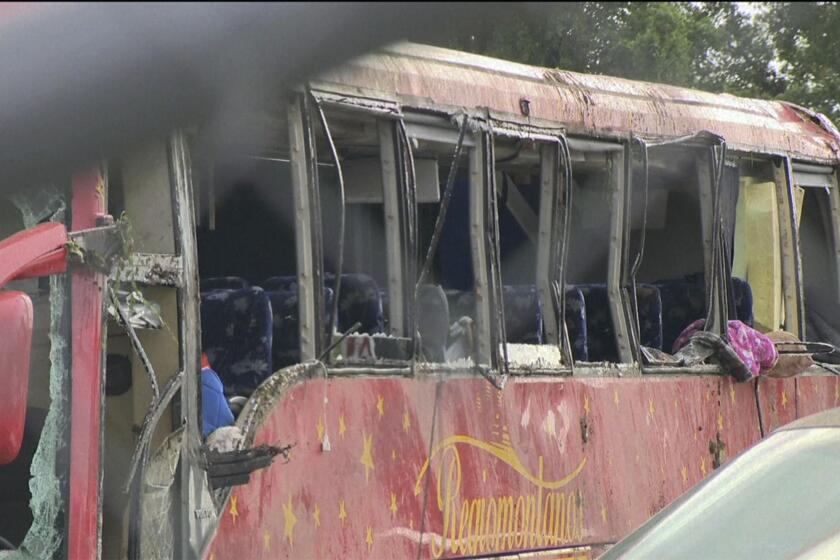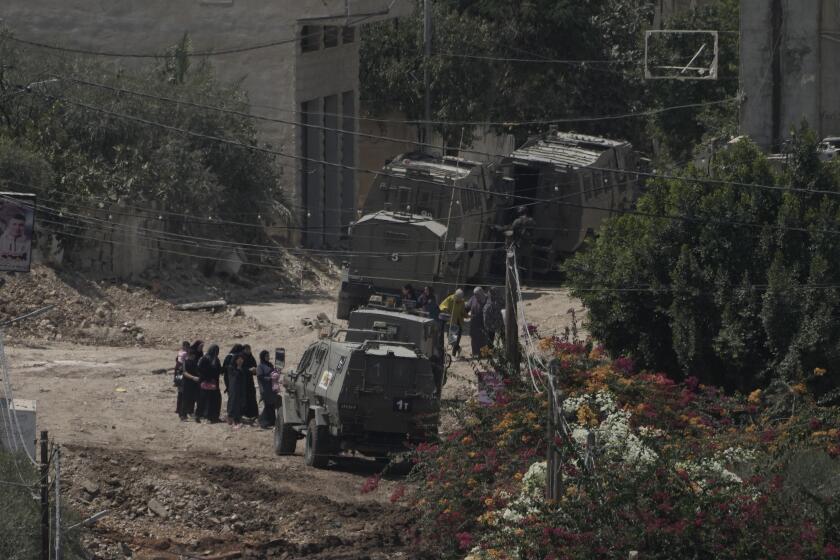Soviets Face a Dark, Chilly Winter of Power Shortages
Along with widespread food shortages, much of the Soviet Union faces the danger of power and heat outages this winter as the country’s electricity grid buckles and breaks under the weight of political and economic disorder.
In some locales, rationing or cutbacks have been decreed to slash energy consumption as the shorter and colder days of winter approach. In some already chilly Siberian communities, there is no heat in schools or hospitals. In Vladivostok, industries are now allotted 130 megawatts of electricity, a third less than usual.
In the southern republic of Moldova, the government, seeking a 15% cut in power use over the next six months, has ordered citizens to conserve electricity, natural gas and gasoline. Energy spendthrifts will be heavily fined.
The weekly newspaper Moscow News, quoting alarming estimates that it said emanate from the Economic Administration of the KGB, predicted that the winter electricity shortfall--the gap between supply and unfulfilled demand--will reach 1,500 megawatts in Moscow alone.
That the Soviet Union, by some estimates the world’s No. 1 producer of energy, is menaced by such shortages underlines the extent to which the state-run economy has withered away without leaving anything in its place. Politicians, too, are keenly aware of the dire consequences if large numbers of citizens, who already worry about potential famine, must live in cold and dark homes as well.
“There is a definite danger of fuel shortages in the national economy this winter, and this will undoubtedly be reflected in the energy industry,” Valentin I. Tatarchuk, deputy chairman of the Supreme Soviet legislature’s committee on industry and energy, said in an interview.
Reserve stocks of heating oil, which is burned to generate electricity and to boil water for distribution by citywide heating plants, have dropped by 13% to 16% from last year, Tatarchuk said, and some larger installations have 21% less.
Coal reserves are 13% below minimum safety levels, he said.
The regions at special risk cover a huge sweep of territory: the Far East, Siberia, the Caucasus and Russian lands to the north, the Ukraine and the Urals, officials said.
A power industry specialist in the Russian Parliament, Yuri G. Stepanov, said the shortfall is estimated at 6.8 million kilowatts nationwide, or the amount usually generated to supply the homes and workplaces of 6 million people. A megawatt equals 1,000 kilowatts.
Russian revolutionary V.I. Lenin once quipped that communism was nothing more than the Soviet political system “plus electrification of the whole country.”
So it is fitting that the demise of Moscow’s centralized rule has been accompanied by the breakup of its energy network. The forces at work are multifarious.
For example, Armenia’s nuclear power plant, which accounted for a full 12% of the electricity consumed in the three Transcaucasian republics, has been shut down because of the clamor raised by environmentalists and local nationalists. Inexplicably, the plant was situated in an earthquake danger zone.
A recent fire at the Chernobyl nuclear power plant, although it reportedly injured no one and caused no radiation leaks, will only encourage a broad-based campaign to close the facility in the Ukraine, site of the 1986 accident that was the worst in the history of nuclear power. And yet the station’s three normally functioning reactors (No. 4, which exploded and burned in 1986, has been encased in a protective “sarcophagus”) account for 10% of the electricity generated in the Ukraine, with no substitute readily available.
According to ex-Prime Minister Nikolai I. Ryzhkov, a veritable “Chernobyl syndrome” nationwide has already led to a shutdown or halt in construction at more than 60 nuclear plants, often with no alternate energy sources at hand.
Political strikes and the collapse of labor discipline have crippled operations at the country’s mines; the resulting drop in coal deliveries led to power reductions in the Pacific coast port of Vladivostok, where, according to the Tass news agency, “the situation with electricity and heat this winter will be very tense.”
In the coal-rich Kemerovo region of Siberia, where the thermometer has already dipped to around freezing, the heat has not been turned on in more than 100 kindergartens and schools, 22 hospitals and 2,000 apartment buildings, officials say. In Novokuznetsk, a city of more than half a million people, a third of the housing is still unheated.
As for the production of fuel oil, the petroleum industry is in such dire straits that some economists predict that the Soviet Union, the world’s top oil producer, may have to begin importing petroleum products if demand is to be met.
Ethnic clashes and local independence drives have also damaged the Soviet power grid. For example, Russian personnel at the power and heating plant in Dushanbe, Tadzhikistan, were transferred to the Volga valley to flee nascent nationalist and Islamic militancy. The Dushanbe plant’s output immediately dropped.
The bloody feud between Armenia and Azerbaijan has also caused an “energy famine.” The target of a rail blockade by neighboring Azerbaijan, Armenia cannot obtain more heating oil, coal, natural gas or other fuels for winter, said Grant Bagratyan, the acting prime minister. Hundreds of enterprises have had to close as a result, he said.
Faced with the danger of energy shortages, many republics and cities, Moscow included, have drawn up contingency plans for shutting off power to factories and offices to conserve it for residences, officials say. But those measures may be woefully inadequate.
“The problem is, even those industrial reserves may prove too little for what is needed to heat and light homes if winter proves to be harsher than in recent years,” Tatarchuk said. “The standard level of reserves provides for 40-45 days of operations in the event of a breakdown in supply. This year, we have at least five to six days less. . . .”
His frustration evident, Tatarchuk added: “We could shut down many non-vital plants or industries right now and live comfortably during the winter, but nothing is being done. I am afraid we have lost the time for meaningful preventive measures, and that all we can now hope for is another mild winter.”
The special committee managing the Soviet economy decided Monday that, on average, energy users would get no more than 93% of the oil, gas, coal and electricity they were guaranteed last year--and that is likely to be well below what they actually received in the mild winter of 1990-91.
Ivan S. Silayev, the committee chairman and the former Russian prime minister, has warned, in fact, that fuel stocks at power stations are only 60% of what is needed--and forecasts are for a colder winter.
The offspring of decades of state planning and colossal “hero” projects such as the Bratsk hydroelectric dam, the Soviet power network is composed of more than 1,000 thermal, nuclear and other power stations, 5 million electrical transmission lines and 5,000 repair shops and equipment factories.
The individual republics are now struggling over who should control such wealth, to the detriment of the system as a whole, Moscow-based officials charge. In Russia, where most generating capacity is concentrated, a decree from President Boris N. Yeltsin has wrested all energy facilities from the Soviet Ministry of Power Engineering and Electrification and confided them to a fledgling public utility, the Russian State Power Corp. After reflection, Yeltsin acted to let nuclear plants stay under centralized control, evidently for safety reasons.
Other republics that intend to follow Yeltsin’s lead will be in for an unpleasant surprise. “The bulk of the electricity is generated in Russia, and if the republics finally succeed in ‘nationalizing’ their energy network, they will find themselves without any power, but with plenty of wires and pylons,” Tatarchuk said. “Let’s hope they finally see the light, as it were.”
ECONOMIC TREATY: Eight republics sign pact. A8
More to Read
Sign up for Essential California
The most important California stories and recommendations in your inbox every morning.
You may occasionally receive promotional content from the Los Angeles Times.






